Artificial General Intelligence (AGI) stands at the threshold of transforming the workforce, introducing a paradigm where machines and humans collaborate in unprecedented ways. This shift promises to redefine roles, enhance productivity, and spur economic growth, marking a significant departure from traditional employment landscapes. As we venture into this new era, understanding the implications of AGI becomes crucial for navigating the future of work and ensuring a balanced integration of technology and human expertise.
Understanding AGI’s Role in the Workforce
AGI distinguishes itself by its ability to learn and understand across different tasks, much like a human brain. This breakthrough means machines won't merely follow orders; they'll figure things out on their own. Imagine a robot that doesn't just assemble parts because it's programmed to but understands the purpose behind its actions. This advancement could lead to partnerships where humans and machines brainstorm together.
Currently, machines perform tasks based on specific instructions in their code. AGI revolutionizes this by introducing something akin to common sense. This means machines could suggest improvements in processes based on their "experiences" across various tasks. For instance, a machine learning from data crunching in finance could apply insights to solve a logistics problem.
AGI's adaptability could transform workplace dynamics. Rather than humans adapting to the limitations of machines, machines could adjust to fit our working styles. People might lead projects with AGI agents as versatile team members, contributing insights from a wide array of fields, sparking innovation through a blend of human creativity and machine efficiency.
Streamlined problem-solving with AGI could also redefine job training. Instead of learning to operate a machine with a narrow set of functions, workers might co-evolve with AGI systems, constantly adapting and acquiring new skills. This mutual learning process could make embracing new technology less daunting for workers, fostering a culture of continuous learning and adaptation.
AGI agents might manage mundane or repetitive tasks, allowing humans to focus on creative, strategic, or empathetic roles that require a human touch. However, maintaining transparent communications about AGI's decisions or suggestions will be key, ensuring humans always have the final say.
By collaborating with AGI, employees could find solutions to complex problems faster, combining human intuition with machines' data processing capabilities. This collaboration might lead to discovering novel methods or strategies, leveraging the best of both worlds.
Dialogue between humans and AGI could become seamless. Natural language processing might advance to where speaking to an AGI system is no different from talking to a colleague, breaking down barriers to effective human-machine interaction.
Safety and trust in AGI will be paramount. Developing systems that people can trust to make decisions in their best interest will be a critical step towards effective collaboration. Companies might establish "AGI ethicists" or similar roles to oversee these collaborations, ensuring they uphold human values.
These changes point to a future where AGI doesn't replace jobs but enriches them, fostering an environment where humans and machines support each other's strengths, working towards common goals with compassion, creativity, and unmatched efficiency.
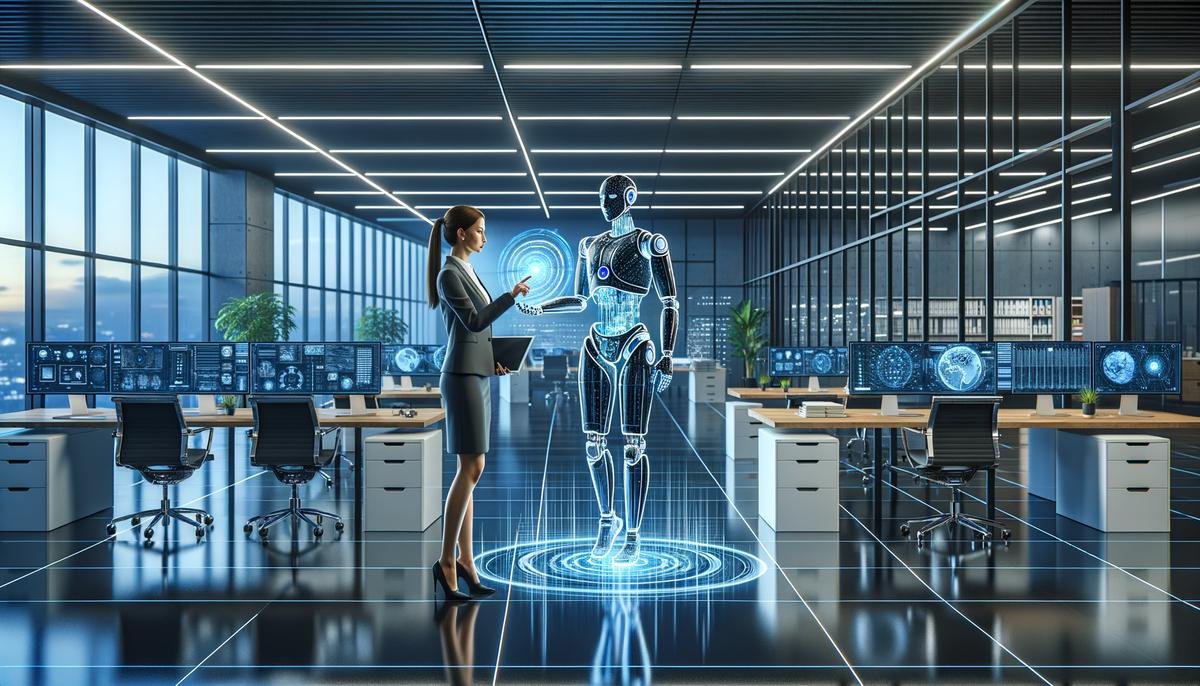
Impact of AGI on Job Displacement and Creation
As we evaluate AGI's broader implications on labor, it becomes clear that this technology could redefine traditional employment landscapes. With AGI, current jobs might face drastic reductions or evolve into roles requiring new skill sets. Simultaneously, AGI is positioned to catalyze a wave of unprecedented job creation, introducing new occupational categories that meld human intuition with machine intelligence.
AGI's proficiency in automating tasks, even those needing a high degree of cognitive involvement, hints at potential workforce disruptions. For roles steeped in pattern recognition, data analysis, and decision-making processes, AGI can take over with efficiency that outpaces human capabilities. While alarming, this shift necessitates a reevaluation of the human workforce's trajectory, directing it towards sectors where emotional intelligence, creativity, and interpersonal skills become paramount.
The health care sector, for example, could experience a significant transformation. AGI, with its ability to analyze vast datasets rapidly, could revolutionize diagnostic processes. Yet, the nuanced interaction with patients, empathetic care, and ethical considerations surrounding treatment decisions will likely safeguard these as human-centric roles. This bifurcation underlines the potential reshaping of job hierarchies within the industry, requiring existing professionals to adapt or specialize further in areas where AGI tools serve complementary roles.
AGI paves the way for integrating advanced problem-solving techniques across industries, from financial services deciphering market trends to environmental scientists tackling climate change. This promises an uptick in innovation and necessitates a flux of new roles designed to leverage AGI's analytical might. Such positions might focus on:
- 'AGI strategy', guiding its optimal use across operations
- A 'human-AGI collaboration' facilitator, a role dedicated to blending the insights from AGI with strategic human intervention
For sectors reliant on customer service and personal interactions, while AGI can handle routine inquiries and streamline operations, a new breed of jobs tailored towards ensuring a seamless integration of human and AGI efforts might surface. These roles could range from:
- 'AGI experience consultants' who customize the AGI output to align with client needs and brand ethos
- 'User empathy analysts' who fine-tune AGI-generated communications, ensuring they convey warmth and personalization effectively
Training and development stand as another frontier witnessing growth spurred by AGI. Preserving an agile workforce adept in working alongside AGI will likely become a standing agenda for corporations, thereby expanding the role of educational technologists and corporate trainers. Specialized programs aimed at understanding and managing AGI systems might emerge as pivotal in educational institutions, alongside continual professional development tracks for on-the-job upskilling.
The autonomous nature of AGI necessitates stringent audits, an allegiance to ethical guidelines, and continuous monitoring to curtail potential misuse. This would inspire roles architected around the governance of AGI deployment in sensitive sectors, ensuring adherence to societal values and legal frameworks.
While AGI's trajectory proposes a complex interplay of displacement and job creation, one underlying truth unifies both outcomes: the indispensability of human adaptability and lifelong learning. As AGI redefines job descriptors and launches new occupational realms, the workforce's preparedness to embrace change, hone new skills, and pivot towards roles augmented by or supervising AGI systems will be cardinal in transitioning through this watershed era in employment history.
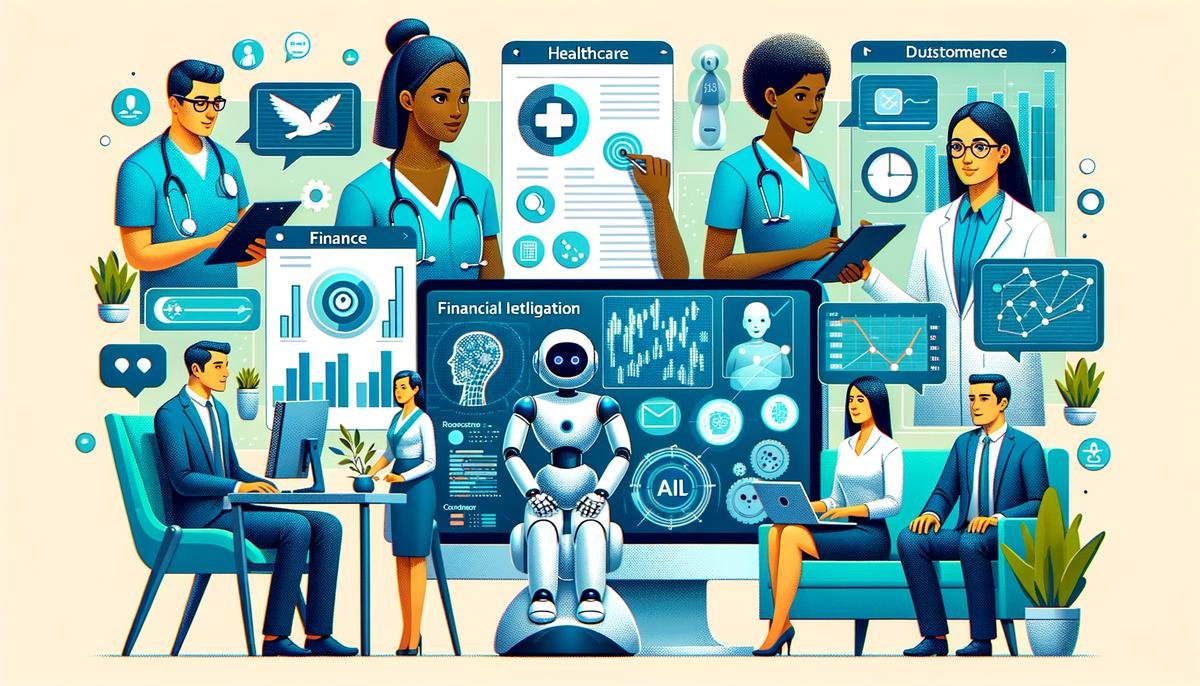
Redefining Skill Sets and Education for an AGI-driven Economy
Embracing a future shaped by AGI requires a shift from conventional educational tracks to dynamic and integrated learning models. Skills in critical thinking, complex problem-solving, and creativity will be paramount as AGI takes over routine tasks, pressing the workforce to engage in more abstract and strategic activities. Professionals need to hone these abilities to work alongside AGI systems, turning challenges into opportunities for innovation and growth.
Technical knowledge about AI and machine learning must extend beyond theoretical understanding to practical applications. This implies a deep dive into coding, system design, and data analysis, equipping individuals to not only interact with AGI systems but also contribute to their development and optimization. This technical agility will enable workers to stay ahead in sectors rapidly evolving through AGI advancements. A study by the World Economic Forum suggests that by 2025, 97 million new roles may emerge that are more adapted to the new division of labor between humans, machines, and algorithms.
Interdisciplinary skills will be crucial, blending science, technology, engineering, arts, and mathematics (STEAM) disciplines. This fusion empowers professionals to draw from diverse perspectives, fostering innovation in AGI's multifaceted applications. Educational institutions should gear towards curriculums that encourage cross-pollination of ideas and collaboration across fields, paving the way for groundbreaking achievements in AGI.
Adaptability and resilience emerge as non-negotiables. AGI's ascendancy will alter job descriptions and demand new skill sets, making continuous adaptation a prerequisite for career longevity. This necessitates an educational focus on encouraging a growth mindset and resilience against the backdrop of technological uncertainties. Research by McKinsey Global Institute indicates that as many as 375 million workers (roughly 14 percent of the global workforce) may need to switch occupational categories as digitization, automation, and advances in artificial intelligence disrupt the world of work.
Ethical reasoning gains newfound importance as dilemmas surrounding AGI's impact on society surface. Professionals will encounter scenarios requiring careful negotiation between technological possibilities and moral imperatives. Education must, therefore, embed ethical reasoning as a core competency, aiming for the thoughtful deployment of AGI technologies.
Communication skills will take a central role, enabling effective human-AGI interaction. As machines grow more adept at understanding and generating human-like responses, the workforce must communicate ideas clearly and empathetically to bridge the gap between humans and machines. This demands a curricular emphasis on enhancing verbal and written communication faculties.
Leadership in an AGI-dominated landscape calls for redefinition. Leaders must inspire innovation while steering ethical AGI use and fostering team adaptation to change. Leadership training should integrate decision-making in the context of AI-induced changes, focusing on inclusivity and ethical considerations.
Emotional intelligence will be invaluable, ensuring human-centric services flourish alongside AGI advancements. Professionals skilled in empathy, social awareness, and relationship management will lead sectors where the human touch remains irreplaceable.
Surviving and thriving in an AGI-driven economy hinges on an educational overhaul favoring continuous learning, interdisciplinary exploration, and enhanced soft skills. As AGI reshapes the fabric of the workforce, adopting these competencies ensures individuals remain indispensable partners in the human-AGI collaboration era.
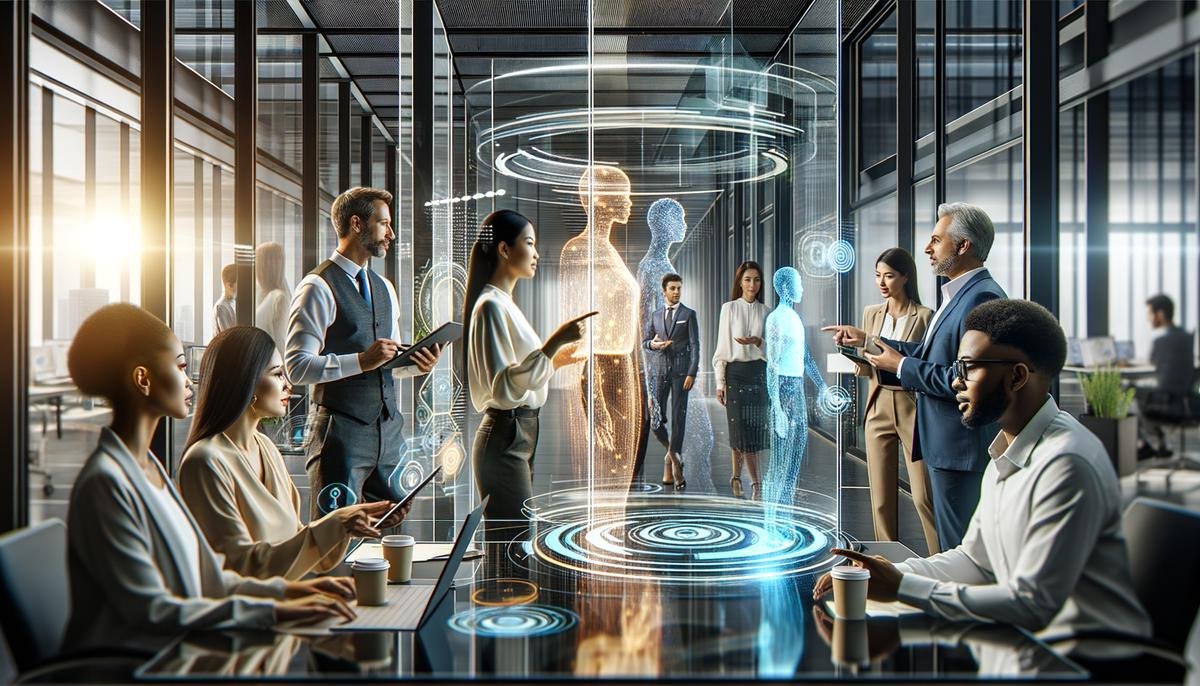
Ethical Considerations and Governance in AGI Deployment
AGI's capacity to process and interpret vast datasets prompts a significant ethical dilemma regarding privacy in the workplace. Employees might worry about constant surveillance and excessively detailed monitoring of their every action. Companies must balance enhancing operational efficiency with respecting individual privacy rights, adopting transparent data handling procedures that specify what data AGI systems collect and how it's utilized.
Concerning bias, the learning algorithms of AGI inherit the prejudices present in their training data. This raises alarms about perpetuating societal stereotypes and unfair treatment in hiring, promotions, and workplace evaluations. Addressing this issue calls for developing AGI with mechanisms that identify and correct biased decision-making processes, ensuring fair and equitable treatment for all workers. A study by the National Bureau of Economic Research found that job applicants with "Black-sounding" names were 50% less likely to receive callbacks for interviews compared to those with "White-sounding" names, demonstrating the prevalence of bias in hiring practices.
Accountability presents another gray area. When AGI systems make autonomous decisions that result in workplace accidents or errors, pinpointing responsibility becomes challenging. Establishing a comprehensive governance framework that outlines accountability in scenarios involving AGI decisions is imperative. This framework should detail:
- How to investigate incidents
- Determine liability
- Ensure that affected parties receive appropriate remedies
The potential socioeconomic divide spurred by AGI integrates into discussions around ethical deployment in workplaces. The rapid advancement of AGI could disproportionately benefit highly skilled sectors at the expense of lower-skilled jobs, exacerbating income disparities and unemployment rates in certain demographics. Promoting an inclusive approach to AGI development and implementation demands initiatives focused on reskilling and fair access to technological advancements for all. According to a report by the Brookings Institution, automation and AI could potentially displace 25% of U.S. jobs, with low-wage earners facing the highest risk.
Navigating these ethical concerns necessitates creating multi-stakeholder governing bodies. These entities should possess the authority to oversee AGI's development and integration into work settings while soliciting input from various sectors, including employees, ethicists, technologists, and policymakers. Their role would involve crafting guidelines that safeguard worker rights, promote transparency, and foster an ethical culture around AGI use.
Deploying AGI within the workforce challenges present-day governance structures to rise to the occasion. Addressing privacy, bias, accountability, and the burgeoning socioeconomic gap calls for a nuanced and proactive approach. By embracing these challenges head-on, the journey towards ethical AGI deployment in workplaces looks not just attainable but beneficial for society as a whole.
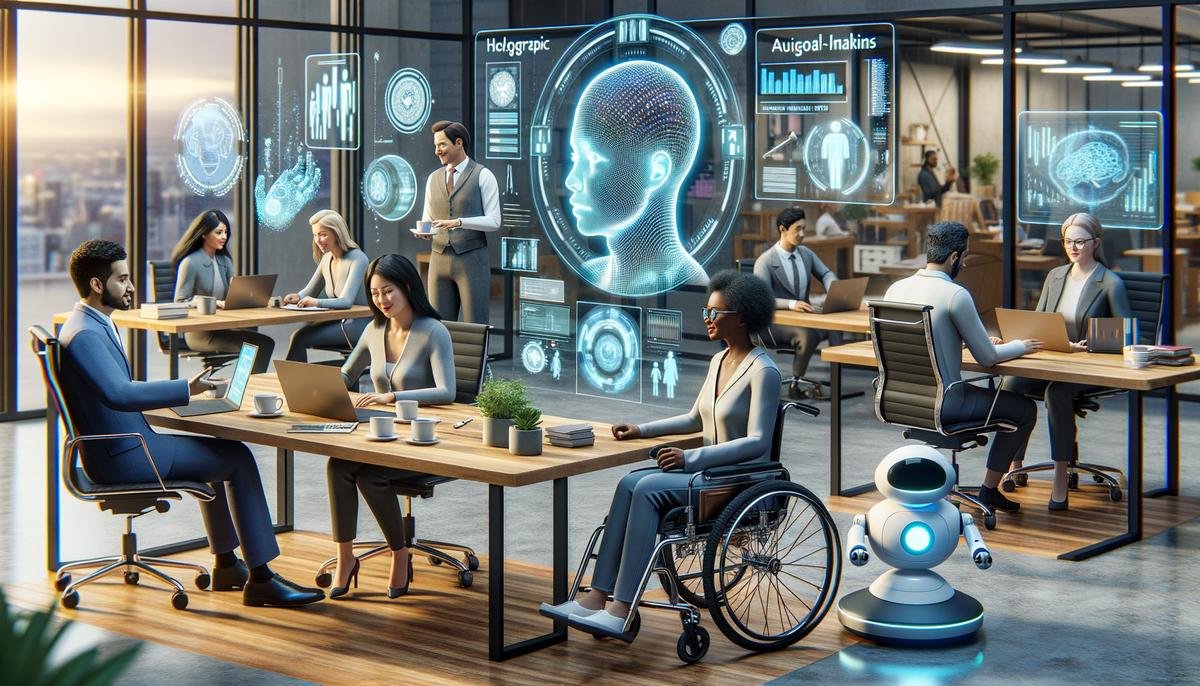
AGI, Productivity, and Economic Growth
AGI stands as a beacon of potential for economies worldwide. Its impact extends beyond enhanced productivity through streamlined operations and automated decision-making. It includes the creation of industries and services tailored around AGI technologies, from maintenance and upgrade services for AGI systems to sectors wholly reliant on the autonomy and adaptability of AGI.
However, the spoils of this technological leap won't fall evenly across society's spectrum. Certain sectors revel in the boon of efficiency and innovation, while others might face the specter of redundancy. It raises a flag for policymakers and stakeholders—how can growth remain inclusive?
Policy interventions, armed with strategies to democratize AGI's offerings, become crucial. Education and workforce training programs carve pathways to navigate the new landscape, ensuring that individuals are not spectators but active participants in the unfolding era of AGI. Pivoting towards continuous learning chambers ensconced within the workplace can mold a workforce resilient and adaptive to AI-enhanced environments. The World Economic Forum estimates that 54% of all employees will require significant reskilling and upskilling by 2022.
Fostering inclusivity involves more than skilling and re-skilling. It involves seeding an ecosystem where AGI-driven enterprises contribute back to society—through sustainable practices, equitable employment opportunities, or supporting public infrastructure development.
AGI's ascendancy also predicates on an unwavering commitment to evolving regulatory frameworks—a symphony orchestrated with inputs from multifarious stakeholders championing ethical deployment and accountability.
As sectors service the veins of AGI development, from healthcare diagnostics to logistical wizardries, they illumine paths for human potential. Herein resides the congruence between thriving economies and enriched societal fabrics, a testament to the nexus between technological acumen and human dexterity where everyone gets a seat at the table. A McKinsey Global Institute report suggests that AI could deliver an additional economic output of around $13 trillion by 2030, increasing global GDP by about 1.2% annually.
AGI could indeed be the lodestar for economic renaissance and productivity paradigms—but only if cradled within frameworks that promote fairness, learning, and holistic growth. In the chess game that is economic evolution, AGI forces a play not just on the board but off it, in the intricate ties binding technology to human aspiration.
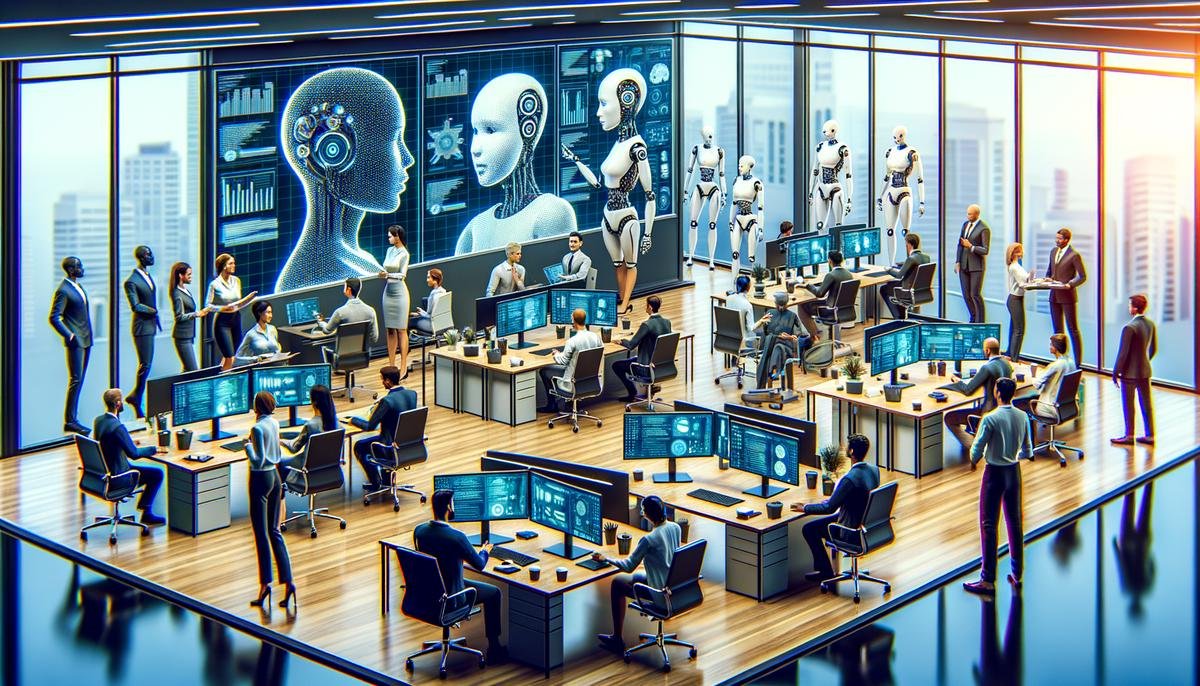
The advent of AGI in the workforce heralds a new chapter in human-machine collaboration, promising to enrich jobs rather than replace them. By fostering an environment where continuous learning and adaptability are prized, we can leverage AGI to unlock innovative solutions and drive economic growth. The journey ahead requires careful consideration of ethical, educational, and regulatory frameworks to ensure that this technological evolution benefits society as a whole.
- World Economic Forum. The Future of Jobs Report 2020. Geneva: 2020.
- Manyika J, Lund S, Chui M, et al. Jobs Lost, Jobs Gained: What the Future of Work Will Mean for Jobs, Skills, and Wages. McKinsey Global Institute. 2017.
- Bertrand M, Mullainathan S. Are Emily and Greg More Employable Than Lakisha and Jamal? A Field Experiment on Labor Market Discrimination. American Economic Review. 2004;94(4):991-1013.
- Muro M, Maxim R, Whiton J. Automation and Artificial Intelligence: How Machines Are Affecting People and Places. Metropolitan Policy Program at Brookings. 2019.
- Bughin J, Seong J, Manyika J, Chui M, Joshi R. Notes from the AI Frontier: Modeling the Impact of AI on the World Economy. McKinsey Global Institute. 2018.




